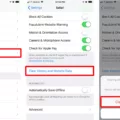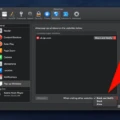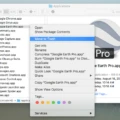Welcome to this blog post about digital footprints and how to erase them! A digital footprint is the data that you leave behind while using the Internet. It includes everything from your posts on social media to the websites you visit, to the content of your emails.
Your digital footprint can be used by companies and other organizations to build a profile about you. This information can then be used for advertising purposes or even to track your online activities. That’s why it’s important to take steps to reduce the amount of data that is collected about you when you’re online.
The first step in erasing your digital footprint is to scrub your public data. You can do this by deleting any posts or comments that are no longer relevant or accurate, as well as any accounts or profiles that you no longer use. It’s also a good idea to audit all of your accounts so that you know exactly what information they have access to and what they are doing with it.
The next step is archiving and deleting. This means saving any important documents and photos in a secure place before deleting them from their original source. This will help ensure that they don’t continue being accessed by third parties after they have been deleted. Once everything has been archived, delete all unnecessary content from social media sites, email accounts, cloud storage services, etc., so that there is less chance of sensitive information being shared with others.
It’s also important to adjust your privacy settings on each platform where you have an account – this will help limit who can see what information about you. Additionally, make sure to clear your browser history regularly and clean up your computer/phone so that there isn’t any unnecessary personal data stored on them either.
Finally, always be mindful of what information you post online and who has access to it – this will help keep your digital footprint small and secure!
We hope this blog post has helped inform you about digital footprints and how to erase them! If you want more detailed advice on protecting your privacy online, we recommend checking out resources from organizations like Electronic Frontier Foundation or Privacy Rights Clearinghouse for more tips on guarding against identity theft and protecting yourself against cyber-attacks. Thanks for reading!

Clearing Your Digital Footprint
Clearing your digital footprint is an important step to take in order to protect your privacy. Here are some steps you can take to help clean up your digital presence:
1. Audit Your Accounts: Take the time to go through all the accounts you have online and review the type of information that is being shared. Look for any outdated or incorrect information and adjust it accordingly. You may also want to consider deleting accounts that you no longer use, as this can help reduce clutter in your digital footprint.
2. Archive and Delete: If necessary, archive any old posts, comments, or conversations that could potentially be used against you. It’s also a good idea to delete any posts or images that contain personal information or could be considered inappropriate.
3. Adjust Privacy Settings: Make sure to change the privacy settings on all of your accounts so that only people who are approved by you can access them. This will help ensure that only those whom you trust have access to your data.
4. Clear Your Browser History: It’s important to clear out any browsing history from websites that may contain personal information or sensitive material after each session. This includes any saved passwords and autofill fields as well as cached images and pages stored in memory.
5. Clean Up Your Computer: Use anti-virus software to scan for malware and spyware, delete any unnecessary files or programs, and run regular disk cleanups on your computer in order to clear out temporary internet files and other junk data which may contain personal information about yourself or others.
6. Clean Up Your Phone: The same goes for smartphones – make sure you delete any unwanted apps, clear out cached data, disable location services if not needed, and check for any other potential security risks such as malware or spyware which could be harvesting your data without your knowledge.
7 Be Mindful of Others: Finally, it’s important to remember that our digital footprints don’t just affect us – they also impact those around us too. Be mindful of how what you post online can affect others, whether it’s friends, family members, colleagues, or clients who might come across it at some point in the future!
Do Digital Footprints Last Forever?
No, digital footprints never go away. Once something has been posted online, it is stored in the cloud and can be accessed at any time. Even if you delete the post or profile, the data still exists in various databases and caches. Additionally, any screenshots of your posts that were taken prior to deletion are also permanent records of your digital footprint. To minimize your digital footprint, it is important to be mindful of what you post online and to take steps to protect yourself from potentially malicious actors.
Changing Your Digital Footprint
Yes, you can change your digital footprint. To do so, it helps to start by understanding what a digital footprint is and how it is created. A digital footprint is the collection of data created when we use the internet or any digital device. This includes data such as emails sent, web searches, websites visited, purchases made, and more. All of these activities make up our digital footprint. To reduce your digital footprint, you can start by deleting old accounts or disabling features that track your activity on websites or apps. You can also adjust your social media privacy settings so that only approved people can see what you post online. Additionally, be mindful of what information you choose to share online and be sure to read the terms & conditions before signing up for a new account or service. Lastly, using a Virtual Private Network (VPN) can help encrypt your data and keep it safe from third parties who may be tracking your activity online.
Tracing a Digital Footprint
Yes, digital footprints can be traced. Digital footprints are the record of a person’s online activities, such as websites visited, emails sent or received, and social media posts. This data can be tracked and collected by websites, search engines, and other third parties. To protect your privacy, you should take steps to reduce the amount of data that is collected by using tools like anonymous browsing and “Do Not Track” settings on your web browser. You should also be aware of how much information you share online or with third-party services.
Deleting All Traces of Internet History
To delete all traces of your Internet history, begin by opening the Chrome browser on your computer. On the left side of the page, click on “Clear browsing data” which will open a new window. In this window, you can choose how much of your browsing history you would like to delete. You can clear all of your browsing data from the beginning of time or select specific time periods such as the past hour, day, week, month, or year. Once you have selected the desired time period for deletion, click on the “Clear data” button and all traces of your Internet history will be removed from Chrome.

Source: experian.com
Cleaning Your Online Identity
Keeping your online identity clean is an important part of protecting your privacy. Here are some steps you can take to start cleaning up your digital footprint:
1. Review what information is available about you online: run a search of your name on multiple search engines, including image and video searches. Make sure to look through all the results, including any social media profiles, websites, and directories.
2. Remove any outdated or irrelevant content: delete any old or inaccurate posts or accounts that are no longer relevant to your current life. You may also want to contact websites and ask them to remove outdated or incorrect information they have about you.
3. Secure your accounts: make sure all of your accounts have strong passwords and two-factor authentication enabled, if available. Check the privacy settings for each account – consider only making the most important ones publicly visible and keeping the rest private.
4. Monitor what you post online: think carefully about what kind of content you are posting online – especially personal information such as phone numbers, addresses or financial details – as this could potentially be used by criminals for identity theft and other malicious activities.
5. Be aware of phishing scams: never click on links sent from unknown email addresses or text messages, as this could lead you to malicious websites that could compromise your data and identity if visited.
By following these steps, you can start to build a positive digital profile and protect yourself from potential threats online!
Types of Digital Footprints
1. Personally Identifiable: This type of digital footprint reveals information that is linked to an individual’s real name and other personal identifiers, such as email addresses or physical addresses.
2. Anonymous: This type of digital footprint conceals the IP address, meaning that any data collected cannot be linked back to a specific individual.
3. User Input: This type of digital footprint consists of data produced by an individual’s online activities, such as posts on social media or comments on websites. These types of footprints are often used for marketing purposes and will show up in search engine results.
Conclusion
In conclusion, a digital footprint is the trail of data that you leave behind while using the internet. It includes information such as your online search history, social media posts, emails, and more. A digital footprint can be permanent and can be used to build up a profile about you, so it’s important to take steps to reduce the amount of data that is collected. This includes using “Do Not Track” settings in your web browser and using a Virtual Private Network (VPN) for added encryption when sending and receiving data over the Internet. Taking these steps can help protect your digital privacy and keep your personal data safe from third parties.








